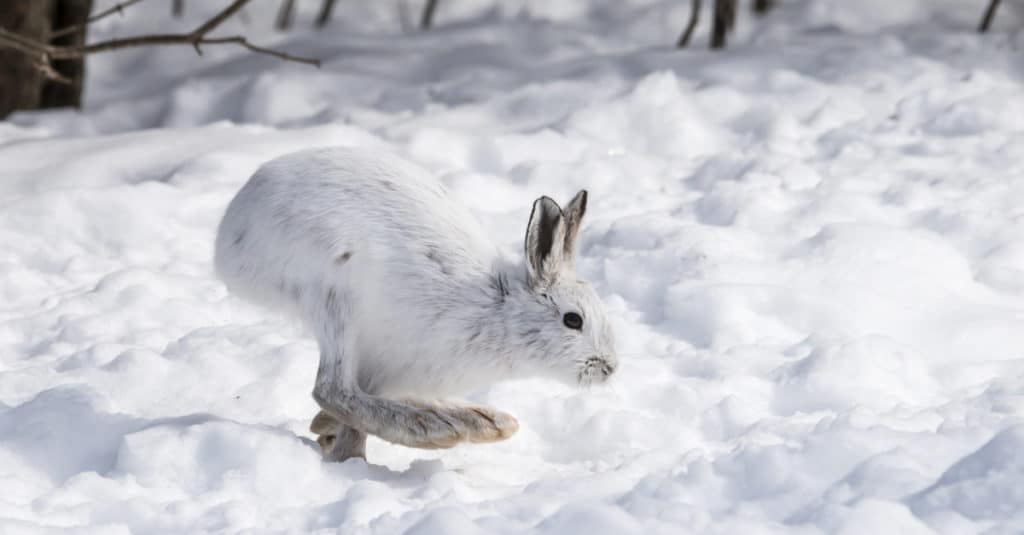Vermont is a state in New England known for its beauty, cold, and snowy landscapes. The state’s residents truly understand what it means to live in the cold. In fact, this northern state is usually placed on any top 10 list involving cold temperatures or snowy conditions. Today, we are going to look specifically at January in Vermont. Let’s discover Vermont’s coldest January on record!
The Coldest January on Record in Vermont

©iStock.com/George Robinson
Fifty years ago, Vermont was struck by a prolonged arctic freeze that left the state in danger for several weeks. January 1970 holds the record for the coldest average monthly temperature ever recorded in Vermont. In Burlington, the average temperature for this month was a frigid 3.6 degrees Fahrenheit! This extremely low temp was an incredible 25 degrees colder than the average temperature from the most recent January in 2022.
The winter of 1969-1970 brought with it a massive nor’easter, a storm along the northeast coast of the United States. It is characterized by strong winds from the northeast, heavy rain or snowfall, and coastal flooding. In Burlington, more than 20 inches of snow fell, while other parts of the state saw even more. This storm hit just days after Christmas and caused over 20 deaths in New England by December 30th.
The extreme cold and heavy snowfall that hit Vermont lasted for over a month, making it one of the coldest and most brutal winters in recent history. While it may not have been as severe as the infamous “year without a summer” of 1816, the winter of 1970 was still a memorable one for Vermonters.
The Coldest Month in Vermont Each Winter
It’s no secret that Vermont is a wintery place, with some of the coldest winters and summers in the country. According to U.S. Climate Data, the coldest month in Vermont is usually January, with an average low temperature of a biting 10 degrees.
While January is typically the coldest month, it’s worth noting that there can be fluctuations, and sometimes February takes the title of “coldest month” instead. However, it’s important to note that Vermont’s cold temperatures aren’t just limited to the winter months. Even in the summer, the state experiences some of the coolest temperatures in the country, with an average low of 50 degrees in July. These temperatures make it the 8th coldest state in the summer months.
How Much Snow Does Vermont Get?
If you live in Vermont, it’s probably no secret that snow is simply part of life. In fact, Vermont holds the title of the snowiest state in the United States! With an annual average of 89.25 inches, it’s not uncommon for Vermont to see snow around 54 days each year. In fact, during the 2018-2019 winter season, the state was blanketed with a whopping 201 inches of snowfall.
The Amazing Cold-Hardy Wildlife of Vermont

©FotoRequest/Shutterstock.com
Despite these extreme conditions, there are a number of plants and animals that have adapted to thrive in Vermont’s climate. Let’s look at some plants and animals that call Vermont home, despite the cold and snowy winters!
One important tree in Vermont is the eastern redcedar, which is native to the state. This hardy tree is able to survive in cold temperatures thanks to its thick, waxy needles that help secure moisture. Most famous of all is the sugar maple, used to produce the maple syrup the state is known for.
As for animals, Vermont is home to a number of cold-adapted species, including the snowshoe hare and the American marten. The snowshoe hare is well-equipped to survive the cold. It has a thick fur coat that turns white in the winter to help it blend in with the snow. The hare also has large hind feet that mimic snowshoes, hence the name!
The American marten is another animal that calls Vermont home and is adapted to survive in the cold. This small predator has a thick, fur-lined tail that it wraps around its body for added warmth in the winter. It also has a high metabolism that helps it to stay warm. Martens were hunted for their pelts until they nearly went extinct. However, they have recently begun to spread into their historic ranges again.
Up Next:
- Discover the Coldest Place in Washington State
- Discover the Coldest Place in California
- Discover the Coldest Point of the Mississippi River
The post Discover Vermont’s Coldest January on Record appeared first on AZ Animals.
from Animal News, Facts, Rankings, and More! - AZ Animals https://ift.tt/c8SKXsq